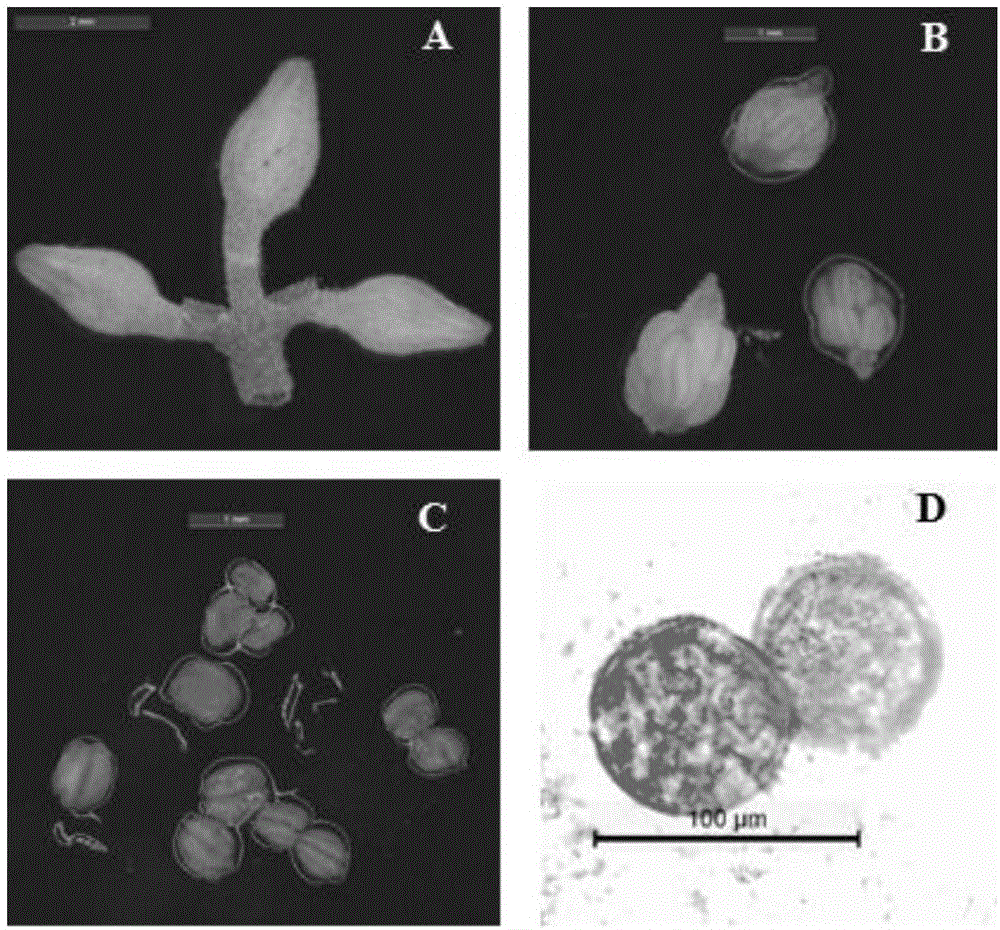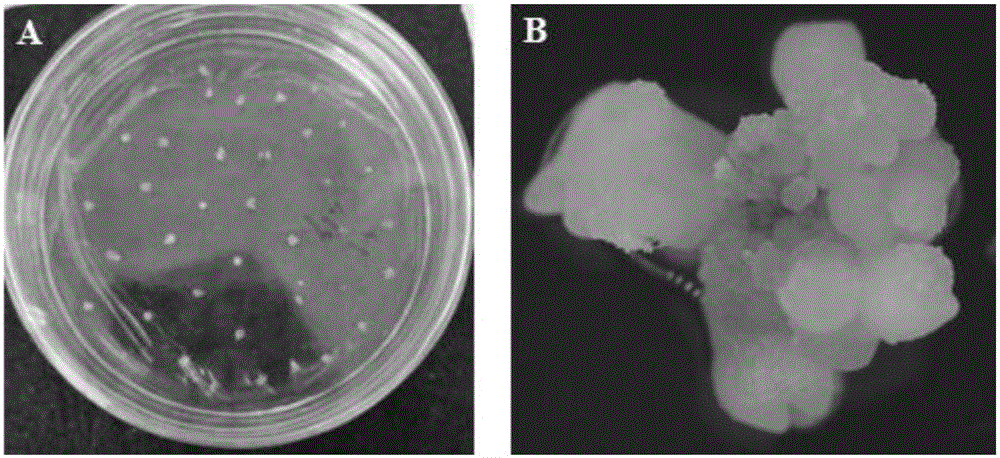Low-temperature preservation culture medium of rubber tree embryonic callus and low-temperature preservation method of culture medium
A technology of embryogenic callus and cryopreservation, which is applied in the direction of plant preservation, horticultural methods, botanical equipment and methods, etc., and can solve the problems of reducing operation and saving labor, losing the ability to recover growth and regeneration, and difficult operation , to achieve a good low temperature storage state, strengthen the antioxidant capacity, and maintain the effect of dynamic balance
- Summary
- Abstract
- Description
- Claims
- Application Information
AI Technical Summary
Problems solved by technology
Method used
Image
Examples
Embodiment 1
[0064] The material is Hevea brasiliensis Müll.Arg. variety Reyan 7-33-97, and the rubber inflorescences were collected from the experimental farm of the Chinese Academy of Tropical Agricultural Sciences. Submerge the inflorescences with 0.1% light soapy water ( figure 1 -A) 10min, rinse with running water. Use sterilized small scissors to cut out unopened, healthy rubber tree male flowers ( figure 1 -B), most of the pollen grain development period is the uninucleate marginal stage ( figure 1 -D). Wrap it with sterile gauze, disinfect the surface with 70-75% alcohol for 40 seconds, and use 0.1% HgCl 2 Soak and disinfect for 12 minutes, then rinse with sterile water for 6 times, and then peel off a single anther under a dissecting microscope and inoculate it on the anther callus induction medium, with 30 anthers per dish.
[0065] Table 1 Correspondence between the pollen development period and the external shape of flower buds of rubber tree Reyan 7-33-97 variety
[0066]...
Embodiment 2
[0075] The embryogenic callus ( image 3-A), inoculated into the cryopreservation medium, the cryopreservation medium is modified MS as the basic medium, including the following components: L-glutamine 250-350mg / L, vitamin C 0.3-0.8mg / L, salicylic acid 18-23mg / L, hydrolyzed casein 280-320mg / L, coconut milk volume concentration 8%-12%, sucrose 65-75g / L, mass concentration 0.08%-0.12% activated carbon and plant gel 2.0~2.5g / L; the improved MS medium uses water as a solvent, including ammonium nitrate 1100mg / L, potassium nitrate 1267mg / L, calcium chloride dihydrate 800mg / L, magnesium sulfate heptahydrate 247mg / L, diphosphate Potassium hydrogen 226mg / L, potassium iodide 0.83mg / L, boric acid 9mg / L, manganese sulfate tetrahydrate 22.3mg / L, zinc sulfate heptahydrate 8.6mg / L, sodium molybdate dihydrate 0.25mg / L, copper sulfate pentahydrate 0.025 mg / L, cobalt chloride hexahydrate 0.025mg / L, disodium edetate 37.3mg / L, ferrous sulfate heptahydrate 27.8mg / L, inositol 100mg / L, glycine 1m...
Embodiment 3
[0078] By visual inspection, callus survival rate (%)=(light yellow fresh and alive callus number / inoculated callus total number)×100%, measure the embryogenic callus preserved at low temperature (4° C.) for 25 days in Example 2 For the survival rate of the tissue, the embryogenic callus cultured for 25 days under the condition of 25°C inoculated on the cryopreservation medium was used as the control group 1, which was preserved for 25 days at low temperature (4°C) on the proliferation medium described in Example 1. The embryogenic callus was the control group 2. The result is as Figure 4 shown.
[0079] Depend on Figure 4 It can be seen that there was no significant difference in the survival rate between the embryogenic callus preserved at low temperature and the embryogenic callus cultured normally at 25°C (control group 1), but it was higher than that cultured in conventional callus medium and cultured at the same low temperature. The survival rate of the embryogenic ...
PUM
| Property | Measurement | Unit |
|---|---|---|
| Longitudinal diameter | aaaaa | aaaaa |
| Diameter | aaaaa | aaaaa |
Abstract
Description
Claims
Application Information
 Login to View More
Login to View More - R&D
- Intellectual Property
- Life Sciences
- Materials
- Tech Scout
- Unparalleled Data Quality
- Higher Quality Content
- 60% Fewer Hallucinations
Browse by: Latest US Patents, China's latest patents, Technical Efficacy Thesaurus, Application Domain, Technology Topic, Popular Technical Reports.
© 2025 PatSnap. All rights reserved.Legal|Privacy policy|Modern Slavery Act Transparency Statement|Sitemap|About US| Contact US: help@patsnap.com



